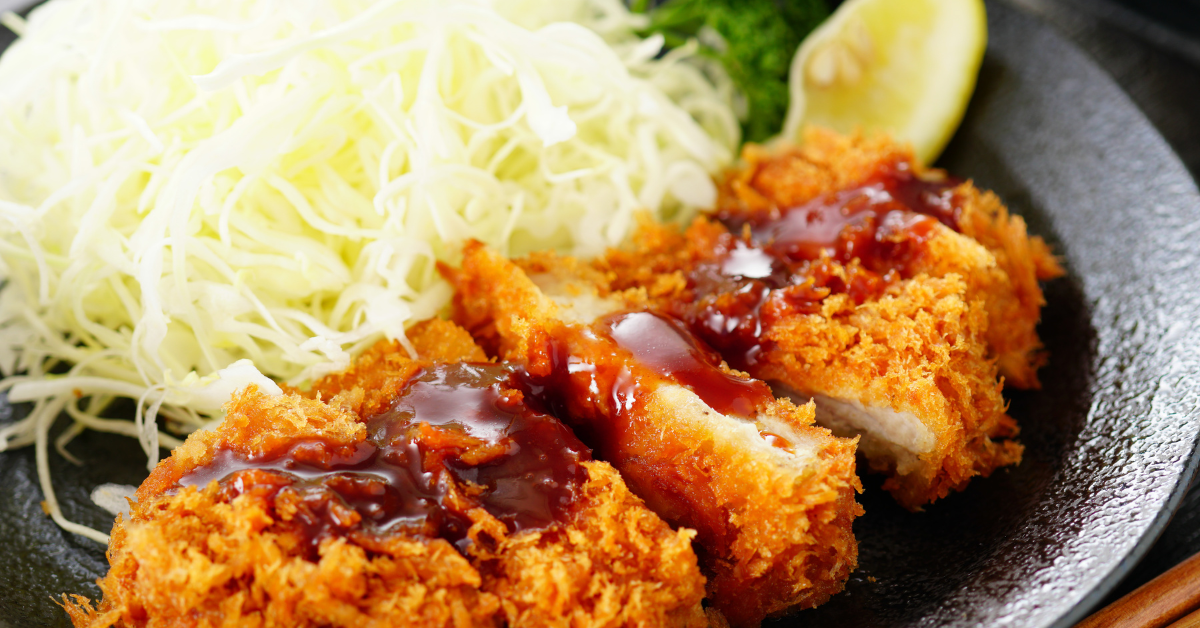Tonkatsu, a Japanese dish of deep-fried breaded pork cutlet, has become one of the must-try meals for foreign visitors in Japan. With its crispy coating, juicy meat, and cultural significance as a set meal served with rice, miso soup, and cabbage, tonkatsu offers more than just food—it provides a true cultural experience.
The History of Tonkatsu
The roots of tonkatsu trace back to the Meiji era, when “pork cutlet” (pōku katsuretsu) was introduced from the West. At that time, it was considered a high-class dish served at Western-style restaurants. By the early Showa period, Japanese chefs began cutting the pork thicker and deep-frying it, creating the style we now recognize as tonkatsu. Around this time, the tonkatsu set meal also became popular, featuring rice, miso soup, and shredded cabbage, offering a balanced combination of flavors and nutrition. During Japan’s period of rapid economic growth, tonkatsu spread to households and specialty shops, cementing its place as a beloved national dish.
Table: Development of Tonkatsu Over Time
| Era | Feature | Style of Serving |
|---|---|---|
| Meiji | Introduction of pork cutlet | High-class Western dish |
| Early Showa | Thick cuts deep-fried | Birth of the set meal |
| Economic boom | Spread to homes and shops | Became popular nationwide |
| Modern day | Low-temp frying, premium pork | Wide variety of styles |
The key point is that tonkatsu, though Western in origin, evolved uniquely within Japanese culture to become an iconic dish.
Types and Features of Tonkatsu
Tonkatsu comes in different variations depending on the cut of meat and preparation method.
Table: Popular Types of Tonkatsu
| Type | Feature | Best For |
|---|---|---|
| Rosu-katsu (loin) | Juicy, marbled with fat | Those who want rich flavor |
| Hire-katsu (fillet) | Tender, lean, low in fat | Health-conscious diners |
| Thick-cut katsu | About 3cm thick, very filling | Those seeking hearty meals |
| Ume-shiso katsu | Refreshing with plum and shiso | Light, refreshing meals |
| Miso katsu | Nagoya specialty with miso sauce | Regional food lovers |
Beyond the cut, the texture of breadcrumbs and the choice of frying oil dramatically change the flavor. Coarse breadcrumbs create a light, crispy coating, while fine ones give a denser finish. Lard-based oil adds richness, while canola oil makes it lighter.
How to Eat Tonkatsu and Its Variations
There is no single way to enjoy tonkatsu. The flavor can change dramatically depending on condiments and sauces.
Table: Eating Styles and Pairings
| Method | Feature | Best Pairing |
|---|---|---|
| Salt | Highlights natural pork flavor | Hire-katsu |
| Tonkatsu sauce | Sweet-savory, enhances crunch | Rosu-katsu |
| Soy sauce | Light and refreshing | Hire, Ume-shiso |
| Miso sauce | Rich and bold regional flavor | Rosu, thick-cut |
Popular variations include:
- Katsudon: Tonkatsu simmered with egg and onion over rice.
- Katsu curry: Tonkatsu paired with Japanese curry rice.
- Katsu sandwich: Tonkatsu between soft bread with sauce.
These adaptations show how tonkatsu is versatile and deeply rooted in Japanese food culture.
Why Foreign Tourists Love Tonkatsu
There are clear reasons why tonkatsu is so appealing to international visitors.
Table: Key Points of Popularity
| Factor | Description |
|---|---|
| Volume | Thick cuts of pork are filling and satisfying |
| Texture | Crispy breadcrumb coating is unique worldwide |
| Set meal style | Balanced with rice, soup, and vegetables |
| Affordability | More reasonably priced than sushi or kaiseki |
| Variety | Options include halal, vegetarian, and fusion |
The dish engages all five senses—sight, sound, smell, taste, and texture—making it more than just food, but an immersive cultural experience.
Recommended Tonkatsu Experiences for Tourists
For first-timers, specialty shops offering freshly fried tonkatsu are highly recommended. The sound of sizzling oil, the aroma, and the crispness of freshly fried tonkatsu are part of the experience.
Table: Regional Tonkatsu Styles
| Region | Feature |
|---|---|
| Nagoya | Rich miso sauce topping |
| Tokyo | Thick-cut, low-temp frying |
| Osaka | Light, golden crisp batter |
| Kagoshima | Sweet, rich black pork |
| Hokkaido | Hearty, large portions with local vegetables |
Some cooking schools and tours also allow visitors to make their own tonkatsu, giving them insight into Japanese cooking techniques.
Conclusion
Tonkatsu began as a Western-inspired dish in the Meiji era but evolved into something uniquely Japanese. With its variety of cuts, ways of eating, cultural set meal style, and affordability, tonkatsu has become a must-try dish for foreign visitors. More than just a meal, it is a sensory and cultural experience that represents Japanese hospitality and culinary ingenuity.
As international tourism continues to grow, tonkatsu will remain one of Japan’s most beloved and iconic dishes.






